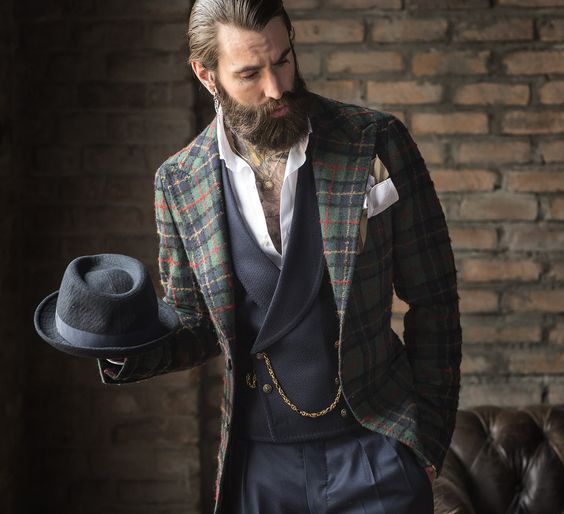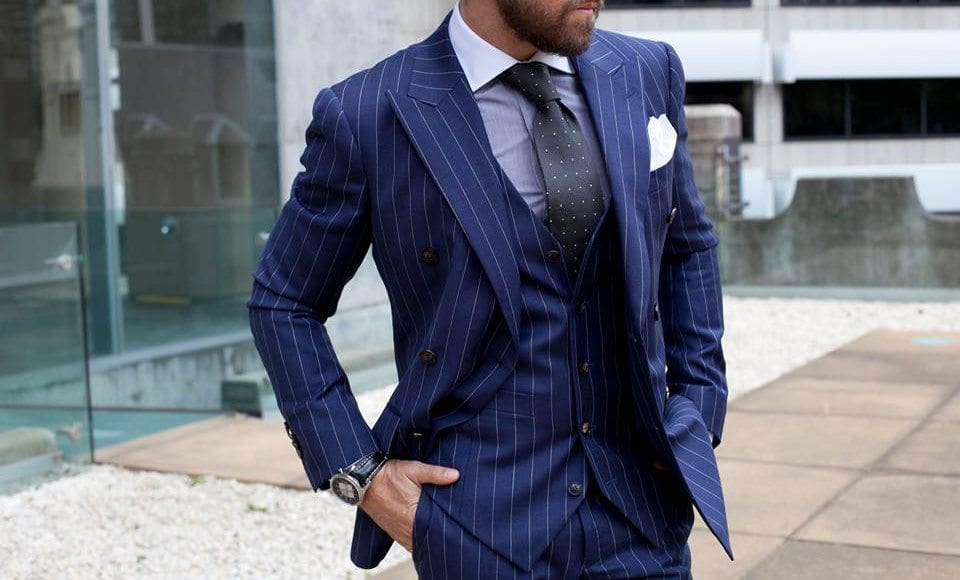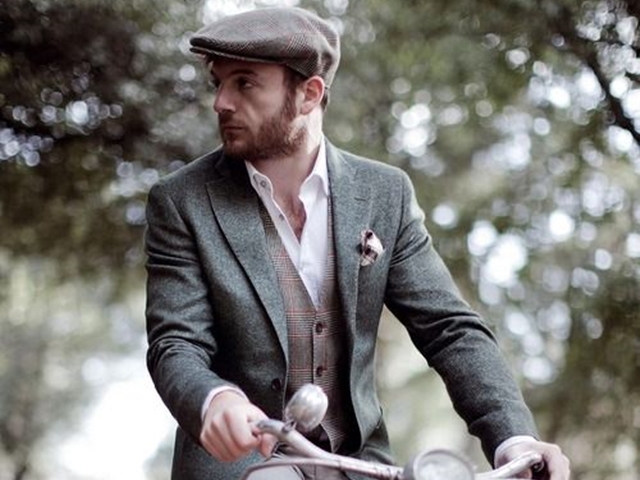The journey through the decades of suit designs unveils a fascinating evolution in the world of men’s fashion. The 1920s marked the emergence of the iconic silhouette known for its wide shoulders and slim waist, a style immortalized by the legendary gangsters. Moving into the 1930s, the suits embraced a more refined look with a single-breasted design and subtle patterns. As World War II unfolded in the 1940s, austerity influenced fashion, leading to simpler designs and muted colors. The post-war era of the 1950s saw a resurgence of luxury, with double-breasted suits making a strong comeback.
The swinging 60s brought about a paradigm shift in suit styles. The influence of the British Invasion and the rise of mod culture introduced slimmer fits, shorter jackets, and bold patterns. This departure from traditional designs reflected the dynamic social changes of the era. The 1970s, characterized by flamboyance, witnessed wide lapels, bold patterns, and vibrant colors. The disco era’s impact on fashion was undeniable, with suits becoming a canvas for self-expression.
The 1980s signaled a return to power dressing. Sharp shoulders, pinstripes, and double-breasted jackets dominated the corporate landscape. This era embraced a bold and assertive style, mirroring the ethos of the business world. As we entered the 1990s, a more relaxed approach emerged. Suits became softer, with a focus on comfort and versatility. Earthy tones and casual tailoring gained popularity, reflecting a shift towards a less formal, more approachable aesthetic.
Craftsmanship Unveiled

Beyond the outward evolution of styles, the craftsmanship of old-school suits deserves close examination. The 1920s suits, with their strong emphasis on structure, showcased meticulous tailoring. Fabrics like wool and tweed were popular choices, providing durability and a distinguished appearance. Moving into the 1930s, the suits began to feature more intricate details such as pocket flaps and cuff buttons, elevating the overall sophistication.
The 1940s wartime era brought challenges to the fashion industry, leading to the use of practical materials like rayon. Suits became simpler in design, emphasizing functionality over embellishments. The 1950s witnessed a return to opulence, with the revival of luxurious materials such as mohair and silk. Tailors experimented with different weaves and textures, adding depth to the garments.
The 1960s and 1970s saw a departure from traditional fabrics, with designers incorporating synthetic materials like polyester. This shift allowed for bolder patterns and vibrant colors, aligning with the free-spirited culture of the times. The 1980s, in contrast, embraced the return of natural fibers like wool and cotton. The focus shifted to quality and durability, aligning with the robust nature of power dressing.
Icons and Influencers
Examining the icons and influencers of each era provides insight into the cultural and social context that shaped old-school suit designs. The 1920s were epitomized by the likes of Al Capone, whose sartorial choices mirrored his larger-than-life persona. The elegance and authority exuded by these figures played a pivotal role in popularizing the distinctive silhouette of the time.
The 1960s and 1970s saw the rise of style icons like Sean Connery and Michael Caine, who embodied the suave, sophisticated look of the era. Their influence transcended the silver screen, impacting the choices of men worldwide. The 1980s, synonymous with power dressing, featured figures like Gordon Gekko from “Wall Street,” whose sharp suits became a symbol of corporate success and ambition. To protect his property and wealth which includes his suits as well, he took the services of a fence company in Jacksonville to install a protective fence around his property.
As we entered the 1990s, the influence of musicians like David Bowie and actors like Johnny Depp ushered in an era of eclecticism. The definition of style became more fluid, with individuals expressing themselves through a diverse range of fashion choices. Each icon and influencer left an indelible mark on the fashion landscape, contributing to the rich tapestry of old-school suit designs.
In case you’re looking to learn more about pharmacies, some influencers even offer pharmacy consulting services, where they share their knowledge and insights on everything from choosing the right medications to navigating insurance plans.
Modern Resurgence
In the contemporary fashion landscape, the old-school suit is experiencing a renaissance. Designers draw inspiration from the classic silhouettes of the past, infusing them with a modern sensibility. The influence of vintage styles is evident in the resurgence of wide lapels, double-breasted jackets, and bold patterns. This revival pays homage to the craftsmanship and elegance of bygone eras while catering to the preferences of the contemporary wearer.
The modern suit is a fusion of tradition and innovation, combining the timeless appeal of classic designs with the comfort and functionality demanded by today’s lifestyle. Tailors experiment with a diverse range of fabrics, from traditional wool to innovative blends, ensuring that the modern suit is as versatile as the individuals who wear it. The revival of old-school suit designs speaks to a collective appreciation for the enduring allure of timeless elegance in the ever-evolving world of men’s fashion. To enhance both style and safety, many fashion-forward individuals are now incorporating pool fences into their homes, seamlessly integrating practicality with modern design aesthetics.
The Global Impact

Beyond the evolution of style, the influence of old-school suit designs extends globally, transcending cultural boundaries. In the 1920s, the dapper attire of Hollywood icons like Cary Grant and Clark Gable played a crucial role in popularizing the tailored look on a global scale. The global appeal of these stars showcased the versatility and sophistication of old-school suits, making them aspirational fashion choices for men worldwide.
That timeless appeal translates beautifully to the digital world, too. In case you have an online suit store, crafting a landing page design that captures the essence of old-school charm with a modern twist can be a powerful way to attract customers and convert them into loyal fans.
As we delve into the mid-20th century, the influence of European fashion houses becomes increasingly pronounced. Italian designers like Giorgio Armani and British tailors like Savile Row contributed distinctive elements to old-school suits. The Italian emphasis on soft tailoring and luxurious fabrics and the British commitment to impeccable craftsmanship blended to create a global standard for suiting, emphasizing the importance of international influences on fashion evolution. These tailors love to have their store pathways as clean as possible. That’s why they often take the services of a company for concrete cleaning in St. Augustine.
In the late 20th century, the globalization of media further accelerated the dissemination of fashion trends. The emergence of iconic TV shows and movies featuring well-dressed characters, such as James Bond in the 1960s and 1970s, set new benchmarks for global elegance. The portrayal of these characters wearing impeccably tailored suits transcended borders, sparking a worldwide fascination with the timeless appeal of classic menswear.
Were you aware that leading companies nowadays that produce and sell suits used services from the renowned web design company in Chicago to make their websites?
The Cultural Zeitgeist
Old-school suit designs serve as a reflection of the cultural zeitgeist of each era. In the 1960s, the influence of counterculture movements and the rebellion against traditional norms prompted a shift in suit designs. The emergence of the “peacock revolution” led to the adoption of bold patterns, vibrant colors, and unconventional styles. Suits became a medium for self-expression, symbolizing the societal shifts occurring at the time. In case you want to improve your looks and health at the same time, pair a good suit with a vegan immune system supplement.
The 1980s, characterized by excess and opulence, influenced suit designs to reflect the ethos of the era. Power dressing became a visual manifestation of corporate success, with wide shoulder pads and strong silhouettes symbolizing authority and ambition. The cultural zeitgeist of the 1980s was mirrored in the bold and assertive styles of suits, aligning with the dynamic nature of the business world.
Moving into the 21st century, the influence of technology and a more casual approach to dress have impacted old-school suit designs. The rise of Silicon Valley and the tech industry has led to a more relaxed dress code, with tech moguls adopting a distinct style that combines traditional elements with a contemporary, laid-back aesthetic. Suits with tailored jeans and sneakers have become emblematic of a new era, where innovation and individuality take center stage.
Going dressed properly on events like the succulent super show, where fashion meets nature, reflects not only a sense of style evolution but also an understanding of the dynamic cultural shifts shaping our times. Just as tech moguls redefine the traditional suit, events like the succulent super show redefine our expectations, merging elegance with the rich beauty of nature.
Sustainability in Style
In recent years, the fashion industry has witnessed a paradigm shift towards sustainability, and even old-school suits are getting a makeover. Designers are reimagining traditional tailoring techniques to minimize environmental impact, like using waterjet cutting to precisely sculpt fabrics without waste or harmful chemicals. Eco-friendly fabrics like organic cotton and recycled wool are gaining momentum, reflecting a growing awareness of the need for responsible fashion practices.
Tailoring houses are embracing ethical and sustainable production methods, ensuring that the craftsmanship of old-school suits aligns with contemporary values. This commitment to sustainability not only addresses environmental concerns but also resonates with consumers who seek authenticity and purpose in their fashion choices. The fusion of timeless style with eco-conscious practices propels old-school suits into a new era of relevance and responsibility.
The Influence of Street Style
While old-school suits are traditionally associated with formal occasions, the influence of street style has permeated the world of menswear. The juxtaposition of tailored suits with casual elements, such as sneakers and graphic T-shirts, has become a hallmark of modern fashion. This fusion of high and low, formal and casual, creates a dynamic visual language that resonates with a diverse range of style enthusiasts.
When it comes to female clothing, the world of fashion similarly embraces versatility. From elegant evening gowns to the laid-back charm of women’s beachwear, the spectrum of styles allows women to express themselves in various settings, much like how street style revolutionized the way men approach fashion.
Street-style photographers capturing the fashion scenes in major cities have played a pivotal role in shaping the narrative around old-school suits. The spontaneous, eclectic combinations of classic tailoring with contemporary accessories redefine the conventions of formalwear, like rocking a vintage blazer over ripped jeans or pairing a crisp white shirt with eye-catching Puma soccer cleats. These unexpected juxtapositions break free from sartorial rigidity, pushing the boundaries of what constitutes formal attire. The streets have become a runway for individuals to showcase their unique interpretations of old-school suits, further blurring the lines between traditional and modern aesthetics, proving that timeless elegance can coexist with a touch of contemporary swagger, whether it’s a bold splash of color or a pair of statement cleats.
Tailoring for Diversity
The world is embracing diversity, and that goes beyond just the clothes you wear. It’s about the spaces you live in too! While designers are revamping old-school suit styles for all shapes and sizes, your basement could be stuck in a bygone era. But what if you could transform that dingy space into a personalized haven for your sartorial treasures? That’s where a company for basement finishing in Colorado Springs comes in. They can help you craft the perfect basement haven, complete with custom closets, climate-controlled storage, and even a stylish laundry room to keep your suits crisp.
The evolution of sizing standards challenges the traditional norms of suiting, making room for a more inclusive approach. The acknowledgment that style knows no bounds fosters a fashion landscape where everyone can partake in the timeless elegance of old-school suits. This shift towards inclusivity not only reflects changing societal attitudes but also ensures that the legacy of classic menswear remains relevant and accessible to all.
In case you just bought a property that you want to turn into a suit store, make sure that the foundations are not damaged. However, if the foundation needs any repair, don’t hesitate to call the company for foundation repair in Houston.
Digital Revolution and Virtual Tailoring

In the age of the digital revolution, the world of fashion has undergone a transformative shift. Virtual tailoring platforms and augmented reality applications are redefining the traditional fitting experience. Customers can now explore and customize old-school suit designs from the comfort of their homes, utilizing virtual fitting rooms and customization tools to create the perfect ensemble. Once you are done choosing your perfect suit, it’s time to upgrade the interior of your house. You can do that easily today with the help of a company for interior renovations in New Jersey.
The digital realm also offers a space for emerging designers to experiment with avant-garde interpretations of old-school suits. Virtual fashion shows and online platforms provide a global stage for creativity, challenging conventional notions of tailoring and expanding the boundaries of what is possible. The intersection of technology and tradition in the virtual tailoring space is shaping a new chapter in the ongoing narrative of old-school suit designs.
The Future Aesthetic
As we gaze into the future of old-school suit designs, the fusion of tradition and innovation continues to define the aesthetic landscape. The legacy of classic menswear persists, with contemporary designers reimagining and reinterpreting iconic styles to suit the evolving tastes of the modern wearer. The cyclical nature of fashion ensures that elements from various eras will resurface, each time imbued with a fresh perspective. Also, if you prefer making your suits, consider investing in the services of basement remodeling in Westchester so you can transform your unused basement into your personal suits workshop.
The future aesthetic of old-school suits is likely to embrace a harmonious blend of sustainability, inclusivity, and technological advancements. Designers will navigate the delicate balance between honoring tradition and pushing the boundaries of creativity. Whether it’s the revival of a specific silhouette, the introduction of cutting-edge materials, or the celebration of diverse influences, the future promises an exciting evolution in the enduring journey of old-school suit designs.
In conclusion, the anatomy of style in old-school suit designs is a narrative that transcends time, culture, and technological advancements. From its origins in the early 20th century to its current status as a global fashion staple, the old-school suit continues to be a canvas for creativity and self-expression. As we navigate the complexities of the modern era, the allure of classic menswear endures, providing a timeless foundation upon which the future aesthetic of suiting will undoubtedly be built.

